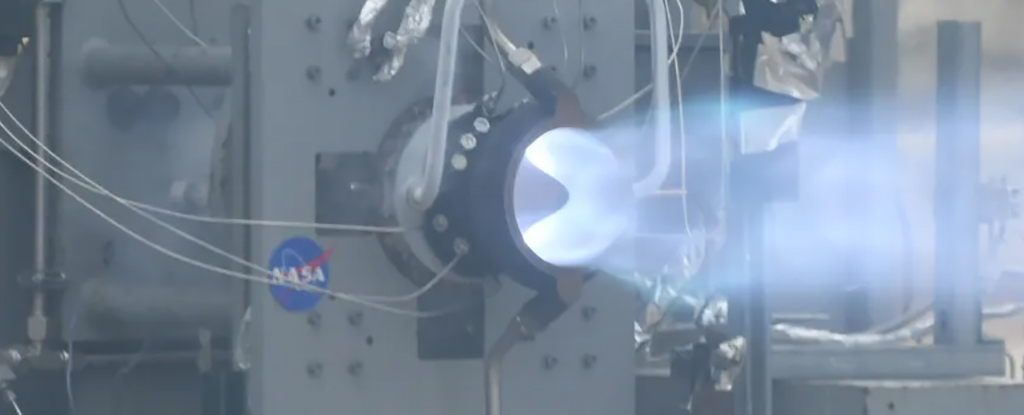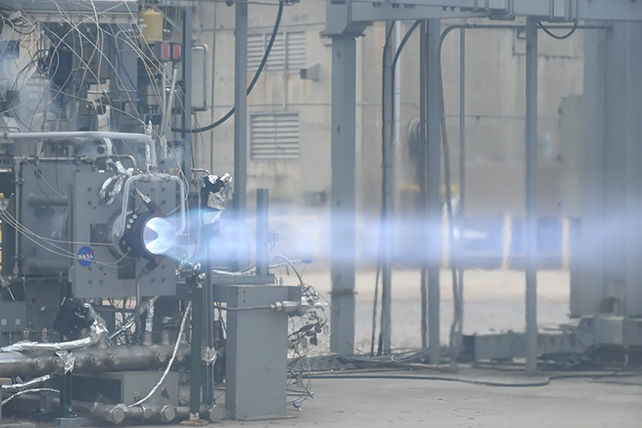
Following lunar exploration, the next frontier for humanity is Mars, posing unique challenges in rapid, long-distance space exploration.
In a significant advancement for swift interplanetary travel, NASA has recently confirmed the success of a groundbreaking rocket engine test, boasting enough thrust for a journey to the Red Planet.
Conducting tests on the prototype Rotating Detonation Rocket Engine (RDRE) at NASA’s Marshall Space Flight Center in Alabama has marked a breakthrough for the technology. It achieved a record thrust of 25,810 newtons (5,800 pounds) for 251 seconds.
This surpasses the 17,800 newtons of thrust achieved for nearly a minute by the rocket engine in 2022, with the results officially confirmed in early 2023.
The ultimate goal is to construct a completely reusable 44-kilonewton class Rotating Detonation Rocket Engine (RDRE) to enhance conventional liquid rocket engine technology.

The RDRE enables a huge leap in design efficiency,
says combustion devices engineer Thomas Teasley, who is leading the RDRE project at the Marshall Space Flight Center.
The groundbreaking aspect of the RDRE lies in its utilization of a continuous detonation encircling a ring-shaped channel. This channel is supplied with a mixture of fuel and oxygen, ignited by each successive explosion.
Under development for several years and undergoing lab-based testing since 2020, scientists are now demonstrating the stability and manageability of the technology for actual rocket use in space exploration.
Essentially, the RDRE requires less propellant fuel compared to traditional rocket engines and boasts simpler machinery and mechanisms. This cost-effective design makes space travel more affordable and enables exploration over greater distances.
Exploring space comes with considerable costs, potentially contributing to the absence of alien visitors. The RDRE signifies a significant enhancement in fuel efficiency for covering long distances in space exploration.
Additionally, noteworthy is NASA’s utilization of 3D printing methods to create custom machine parts robust enough to endure the intense heat and pressure inherent in the RDRE design.
The engineers leading the test expressed that they have gained improved insights into how the combustor can be scaled and adjusted to accommodate various thrust levels, engine systems, and mission classes.
NASA envisions the possibility of humans setting foot on Martian soil by the 2030s. While numerous challenges remain in reaching and surviving on Mars, an efficient propulsion system addresses a significant obstacle in this ambitious journey.
It demonstrates we are closer to making lightweight propulsion systems that will allow us to send more mass and payload further into deep space, a critical component to NASA’s Moon to Mars vision,
says Teasley.





